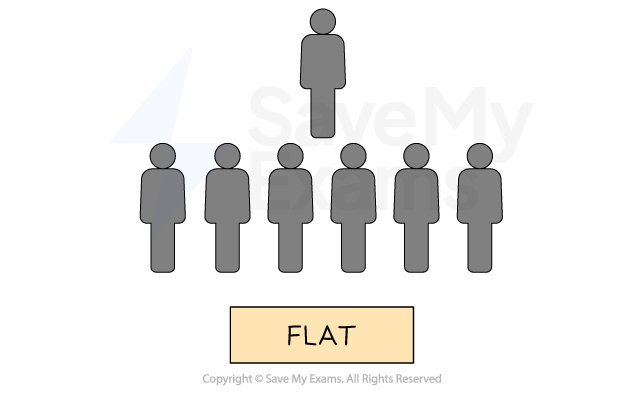Organisational Charts (Edexcel IGCSE Business): Revision Note
Exam code: 4BS1
Introduction to organisational structure
An organisational structure outlines the reporting relationships, roles, and responsibilities of employees
Businesses need to choose a suitable structure to enable them to effectively implement ideas and achieve their objectives
They should consider how the structure may affect the management and effectiveness of operations and communication
A well-designed organisational structure helps to provide clarity, efficiency and accountability
It can be visually represented using an organisation chart
Example organisation chart

1. Hierarchy
A hierarchy refers to the levels of authority within an organisation
It describes the ranking of positions from top to bottom
The higher the position in the hierarchy, the more authority and power it holds
The hierarchy usually includes top-level management, middle-level management, and lower-level employees
2. Chain of Command
The chain of command is the formal line of authority that flows downward from top management to lower-level employees
It defines who reports to whom and who is responsible for making decisions
The chain of command helps to establish a clear communication channel and helps to maintain accountability within the organisation
3. Span of Control
The span of control refers to the number of employees that a manager or supervisor directly manages
It is based on the principle that a manager can only effectively manage a limited number of employees
A narrower span of control means that there are more layers of management
A wider span of control means that there are fewer layers of management
Flat and hierarchical organisational structures
The chain of command and span of control are closely linked
A long chain of command usually results in a narrow span of control
This is known as a hierarchical organisational structure
A short chain of command usually results in a wide span of control
This is known as a flat organisational structure
Characteristics of hierarchical and flat structures
Hierarchical organisational structure | Flat organisational structure |
|---|---|
|
|
 |  |
Advantages | Advantages |
|
|
Disadvantages | Disadvantages |
|
|
Some businesses may choose to remove layers from their hierarchy, which shortens the chain of command
This is known as delayering
Examiner Tips and Tricks
Remember the following distinctions:
The longer the chain of command, the more ‘hierarchical’ the organisational structure and the ‘narrower’ the span of control
The shorter the chain of command, the 'wider' the span of control
In exam questions you may be asked to define a specific key term in this section or explain a type of organisational structure
Centralised and decentralised organisational structures
A centralised organisation structure is where authority for decision-making rests with senior management at the centre of a business
A decentralised structure is where authority for decision-making is delegated further down the hierarchy towards functional or middle managers
In reality, few businesses are wholly centralised or decentralised
In most businesses, strategic decisions are made by senior leaders, whilst operational decisions are delegated to functional areas and middle managers
Evaluation of centralised and decentralised organisational structures
Advantages | Disadvantages | |
|---|---|---|
Centralised structure |
|
|
Decentralised structure |
|
|
Examiner Tips and Tricks
This topic is often tested in multiple choice and 'state' or 'define' questions. Make sure you practice the definitions of key terms as well as relevant examples.

Unlock more, it's free!
Did this page help you?